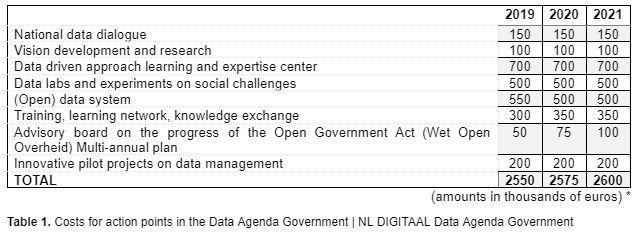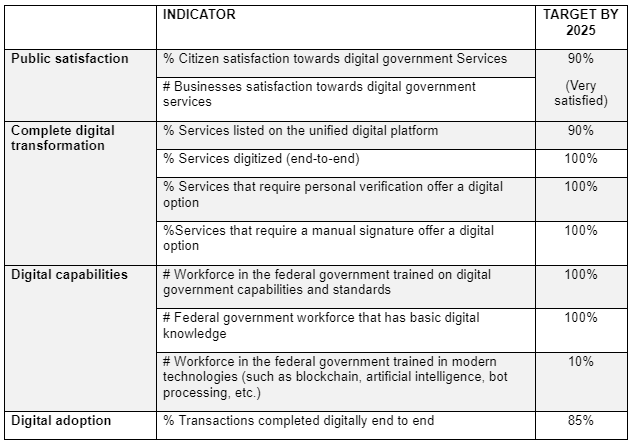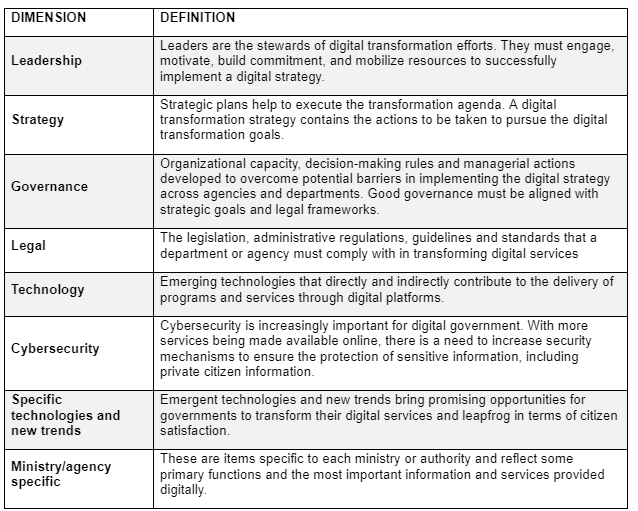Strategic approaches on the use of digital tools and data to improve the delivery of public value

Image source: Gilaxia from Getty Image Signature | Canva
The COVID-19 pandemic has produced disrupted governments while altering levels of public trust and underscoring the importance of strong digital government foundations. On the positive side, this has created an opportunity for governments worldwide to revisit their strategic approaches to using digital tools and data to improve the delivery of public value.
Digital government in the post-pandemic age is recently understood as “the use of digital technologies as an integrated part of a government’s modernization strategies to create and deliver public value,” according to the Organization for Economic Cooperation and Development (OECD).
The article hereby intends to gaze upon some of the best practices in strategy execution as far as the enablement of a digital government in various countries around the globe from perspectives as important as a framework for strategy execution, initiative management, strategy implementation costs, and communication strategy for results strategy.
1. A Comprehensive National Government Data Strategy (the Netherlands)
Data Agenda Overheid is the Netherlands’ national government data strategy developed and led by the Dutch Ministry of the Interior and Kingdom Relations. The strategy aims to accelerate the ethical use of data within central and local governments to foster better policy-making and resolve social challenges, paying specific attention to legislation and public values, data management, knowledge sharing, and investment in people, organizations, and cultural change. Below (see Table 1) are some of the main costs for action points in the Data Agenda Governments:

2. Communication Strategy on the Outcomes of the Digital Government Agenda (Colombia)
Part of becoming more proactive is having a well-equipped public sector capable of responding to citizens’ requests before they are submitted. For this process to function, the public sector must have in place referential strategies or policies to anticipate future scenarios, prepare for the next steps and guide civil servants in their actions.
For example, the Ministry of Information Technology and Communications of Colombia (MINTIC) has developed a communication strategy called Estrategia de Comunicaciones 2018 that functions as a policy lever to inform citizens about the outcomes of the digital government strategy and initiatives of the Colombian government.
The strategy consists of general and specific messages and communication channels targeted to the respective relevant audience. It specifies available tools and communication toolkits that public servants can draw on to communicate proactively with the public. The strategy also includes a detailed action plan with information on the topic, content, and channels to convey the government’s message.
The existence of a communication strategy enhances the anticipatory and organizational capacity of the Colombian government to engage with citizens and guide public servants to promptly communicate with the public once outcomes from the digital government strategy or initiatives emerge. Ultimately, this approach enhances public trust by fostering transparency regarding the result of projects and improving contact with citizens, thereby reinforcing the legitimacy of the government’s actions
3. Initiatives for a Secure Cloud Strategy Execution (Australia)
The Secure Cloud Strategy has been developed to guide Australians through the digital change brought about by the COVID-19 pandemic and make sure everyone has the opportunity to make the most of what the cloud has to offer. The strategy is based on several key initiatives designed to prepare agencies for the shift to the cloud and support them through the transition:
- Initiative 1: Independent cloud strategy for government agencies. Australian agencies are encouraged to develop their journeys to the cloud based on the following: value case, workforce plan, “best fit” cloud models, service readiness, and transition approach.
- Initiative 2: Layered certification model. Sharing information and assessments through a Common Assessment Framework to help improve security practices while at the same time reducing the burden on agencies to recreate material.
- Initiative 3: Redeveloped Cloud Services Panel to align with the procurement recommendations for a new procurement pathway that better supports cloud commodity purchases. Streamlining the current cloud strategy arrangements in alignment with the implementation of the ICT Procurement Review will create a commodity procurement pathway that will ensure the government can procure and access a wider range of innovative cloud services for use by the government.
- Initiative 4: Dashboard to show service status for adoption, compliance status, and services panel status and pricing. The cloud dashboard capability seeks to provide enhanced transparency of cloud usage and compliance cross-government and support clearer guidance regarding the costs, service suitability, and government status in a cloud environment.
- Initiative 5: Cloud service qualities baseline and assessment capability. A cloud qualities baseline capability and assessment framework were developed to enable assessments for the new and existing cloud. This framework includes a baseline and measurement criteria to assess the cloud service. Once complete, assessments are published to provide greater visibility of how services can meet requirements and enable the re-use of assessments across the government.
- Initiative 6: Cloud responsibility model supported by a cloud contracts capability. The approach will include evolving ICT contracts to articulate the responsibilities across the different deployment and service models and strengthen these baseline contract provisions.
- Initiative 7: Whole-of-government cloud knowledge exchange platform. Deliver a platform for agencies to better collaborate and reuse common capabilities for their cloud adoption and use. The development of the platform considers how users interact with the service, accessibility, governance, operations, and technology.
- Initiative 8: Building a Digital Capability program to include cloud skills. A long-term approach to developing a cloud skills capability to ensure the value and opportunity of the cloud is harnessed.
4. Digital Government Roadmap, Strategic Key Performance Indicators (KPIs), and Maturity Model to reflect on a High Commitment to Digital Transformation (United Arab Emirates)
The UAE is among the world’s leading countries in various digital life indexes, including The KPI Institute’s Government Services Index (GSI) 2022 due to the significant advancement of its information and communication technology sector.
The United Arab Emirates is the top performer in the Middle East as far as digital transformation, consistently moving towards a data-driven and paperless government. The Strategy for Government Services states that 100 percent of government services will be accessible from anywhere and 24/7 by 2030. The UAE Strategy for Government Services aims to boost its competitiveness in the services sector and position it as the best in the world in rendering government services.
As far as digital “content provision” is concerned, the UAE is ranked high on the availability of basic public information and resources online. The UAE Institutional Framework reveals a strong focus among other things, on digital government strategy, organizational structure, legislation on access to information and privacy, and open data policy.
The UAE Digital Strategy may be one of the most comprehensive in the world, built on a well-designed digital government roadmap with enablers, a results-measurement framework based on strategic KPIs, and an institutional maturity assessment model to guide successful digital transformation. The UAE Digital Government Roadmap comprises six main pillars encompassing 64 national digital enablers.
The Digital Strategy Measurement framework reveals four areas of measurement, such as public satisfaction and digital capabilities, and 10 strategic KPIs, which all exhibit 2025 targets for achievement of digital government transformation results (see Figure 1).

Figure 1. Strategic KPIs | The UAE Digital Government Strategy 2025
The UAE Digital Government Maturity Model aims to assess the UAE government organizations on both federal and local levels against a framework that helps create clarity about the UAE digital government capabilities and to inform investments in new capabilities. The maturity model comprises eight main dimensions (See Figure 2). Each dimension has a set of sub-dimensions that guide enabling actions that each government entity might take to increase its maturity along each dimension. Each sub-dimension has a set of specific items to be used by each UAE government entity to determine their level of maturity for each sub-dimension and dimension.

Figure 2. The maturity model’s eight main dimensions | The UAE Digital Government Strategy 2025
The five levels of maturity range from Level 1 representing a very low level of maturity to level 5 representing a very high level of maturity (See Figure 3). The assessment responses provide an outline for a roadmap for a successful digital government transformation.

Figure 3. The five levels of maturity | The UAE Digital Government Strategy 2025
The objective is 100 percent a very high level of maturity for all UAE government entities on both federal and local levels by 2025.
This article was first published in the 24th printed edition of PERFORMANCE Magazine. You can get a free digital copy from the TKI Marketplace here or purchase a print copy from Amazon for a nominal fee here.

Tags: data strategy, digital government, Strategy planning





